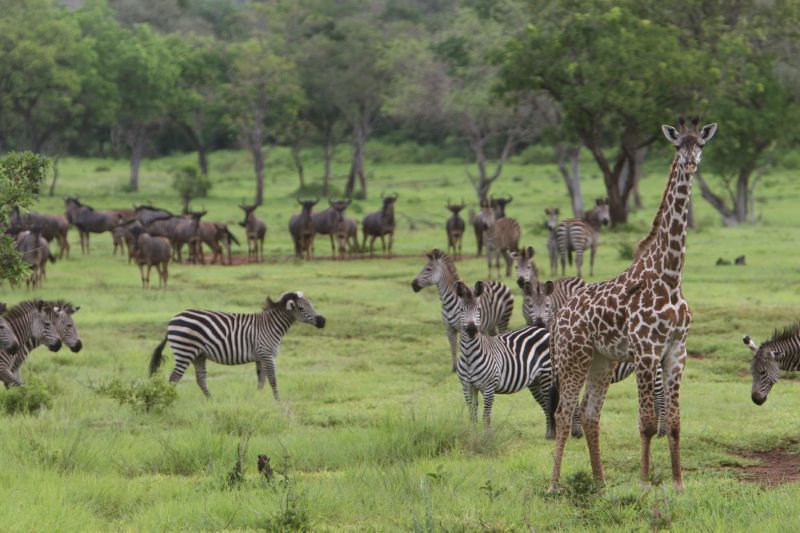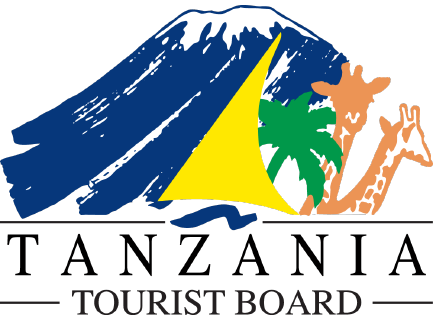15 Days / 14 Nights Tanzania Honeymoon Adventure
Tanzania Safaris
An overview and information over all the 16 National Parks in Tanzania. Also included are protected areas like Selous Game Reserve and Ngorongoro.
This park has three distinct zones: Ngurdoto Crater (often called the 'mini-Ngorongoro'); the shallow alkaline Momella Lakes fed by underground streams (upon which rest thousands of lesser and greater flamingoes, and many migrant birds can be seen between May and October); and the densely forested slopes of Mount Meru (one of the rewarding mountains to climb in Africa and where, among other animal species, live blue monkeys and beautiful black and white colobus monkeys). Other attractions in the park include the elephant, giraffe, buffalo, zebra, hippo, various antelopes, leopard and hyena. The park is 21 km from Arusha on the main Arusha to Moshi road. A network of gravel roads and tracks navigable by two wheel-drive vehicle link the park's main features and viewing points. Nevertheless, a few roads require 4WD vehicles.
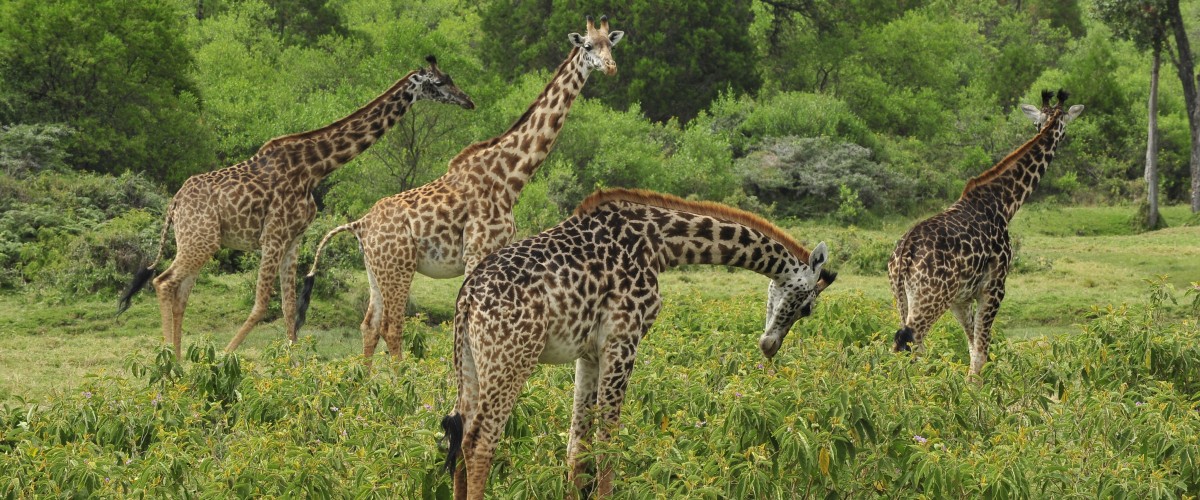
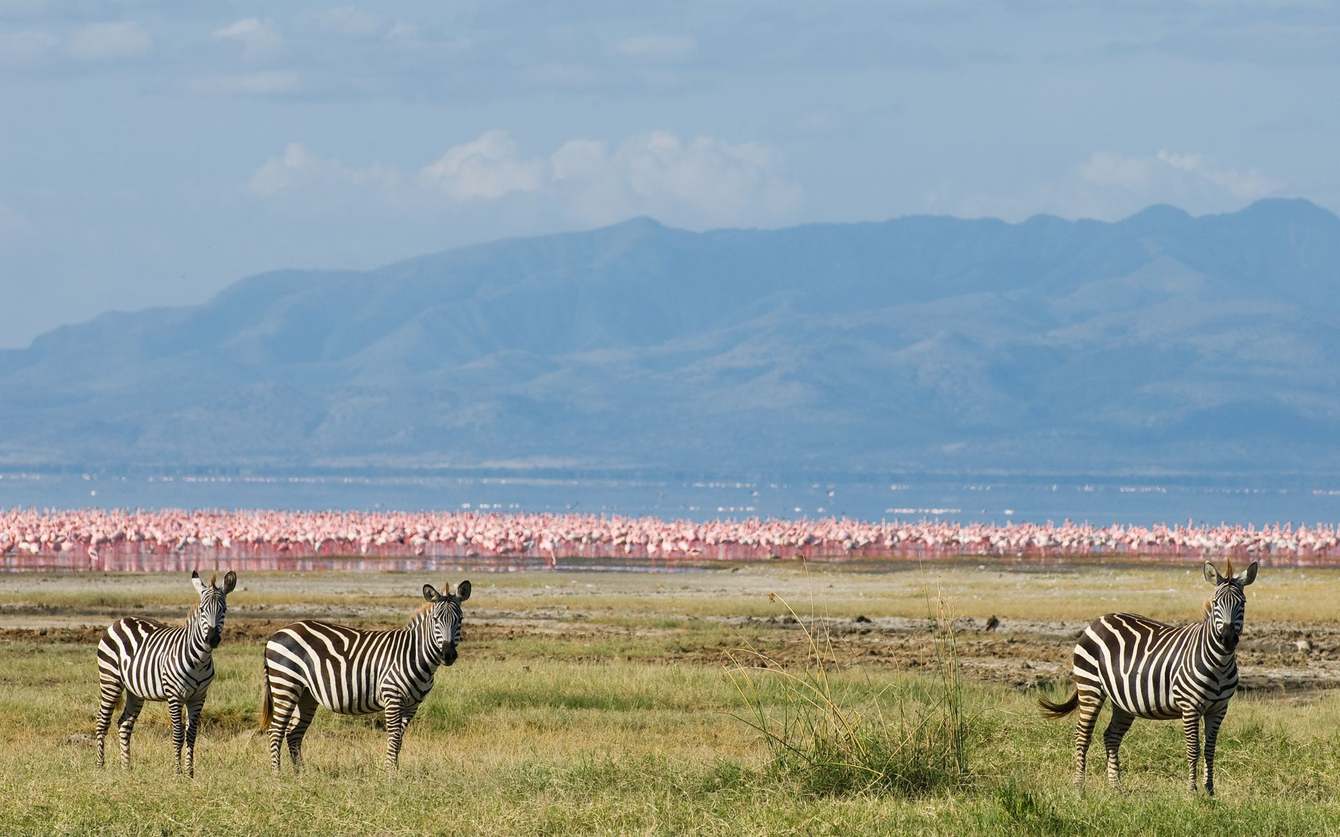
This relatively small park is divided into five distinct vegetation zones: ground-water forest, marshland and reed beds, open grasslands and acacia woodland. In a single day, a visitor may see elephant, buffalo, zebra, hippo and the curious lions which have a habit of resting in trees. Sheltering under the massive escarpment of the Great Rift Valley, and covering an area of 325 sq. km, this park is a flash of green amid an otherwise parched landscape. A line of springs support the lush vegetation of a groundwater forest, where blue monkeys, baboons and the curious-looking silvery-cheeked hornbill live, among the more than 350 bird species, the most profuse being the flamingo.
This vast protected area stretches from Lake Natron in the northeast, to Lake Eyasi in the south, and Lake Manyara to the east. Eight million years ago, the Ngorongoro Crater was an active volcano but its cone collapsed, forming the crater that is 610 meters deep, 20 kilometers in diameter, and covers an area of 311 sq. km. Spectacular as it is, the crater accounts for just a tenth of the Ngorongoro Conservation Area. The crater is home to many species of wild game and birds. With the exception of impala and topi and the giraffe, almost every species of African plains mammal lives in the crater, including the endangered black rhino, and the densest population of predators in Africa. A strange thing is that the crater elephants are mainly bulls. The birdlife, which includes the flamingo, is mainly seasonal, and is also affected by the ratio of soda to fresh water in Lake Magadi on the crater floor. Views from the rim of the crater are sensational. On the crater floor, grassland blends into swamps, lakes, rivers, woodland and mountains. You can descend to the floor of the crater in a four-wheel drive vehicle. Only 4WD vehicles are allowed into the crater and game rangers are compulsory for all.
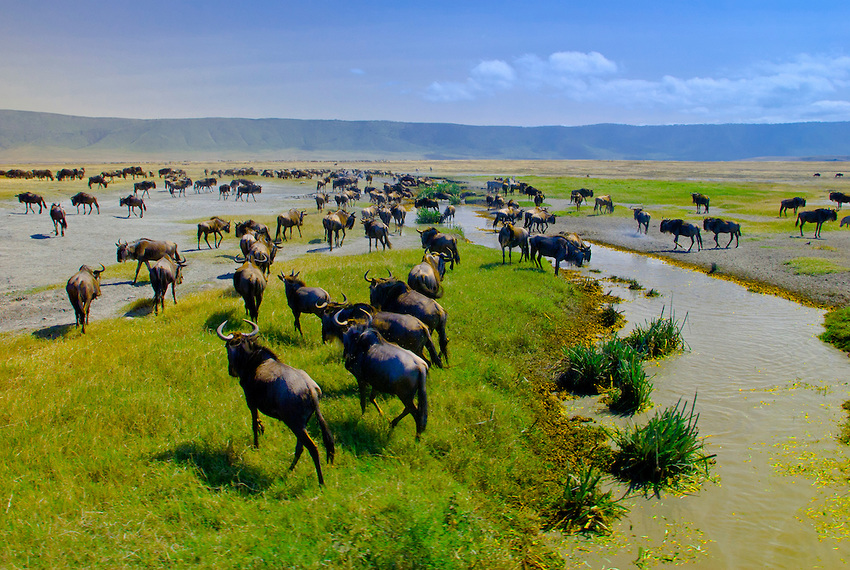
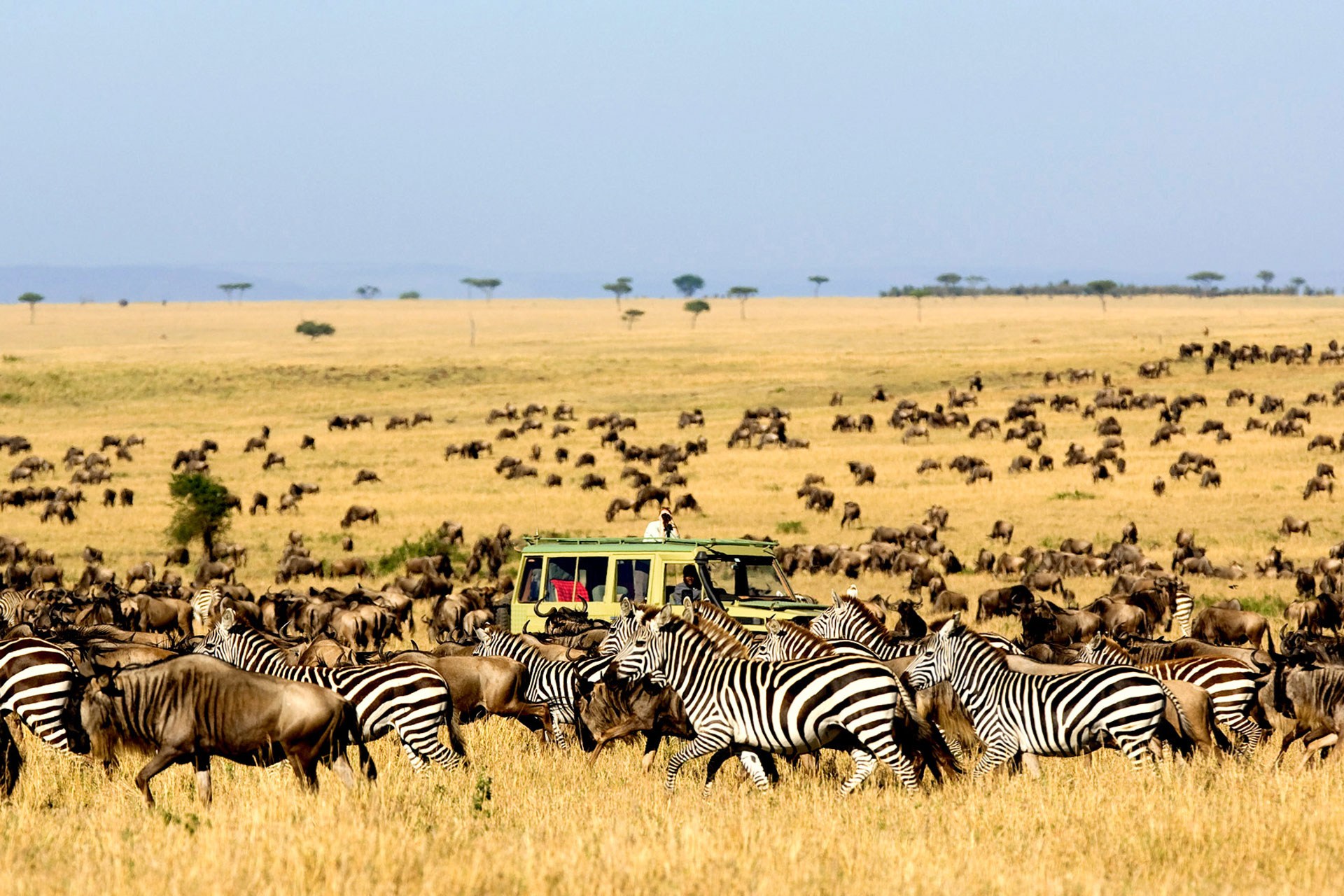
Covering an area of 14,763 square kilometers, equal in size to Northern Ireland, the world famous Serengeti National Park is Tanzania's oldest park, and one of the world's last great wildlife refuges. It is contiguous with Kenya's Masai Mara Game Reserve and stretches as far as Lake Victoria to the West. Its name comes from the Masai word Siringet, meaning 'endless plains'. The Serengeti ecosystem supports the greatest remaining concentration of plains game in Africa, including more than three million large mammals. It is the sanctuary of an estimated four million different animals and birds. The animals roam the park freely and in the spectacular migrations, huge herds of wild animals move to other areas of the park in search of greener grazing grounds (requiring over 4,000 tons of grass each day) and water.
The park's permanent water supply ensures a huge and varied animal population, especially during the dry season when it rivals that of the Serengeti. The animals include large herds of elephants, rhino, buffalo, zebra, lesser and greater kudu, eland, wildebeest, hartebeest, Gerenuk, impala and fringe-eared oryx. This attractive park, with its statuesque baobab trees, is the main refuge for wildlife from the surrounding part of the Great Rift Valley during the dry season. It is also an excellent place for birdwatching. The best birdwatching months are October to May.
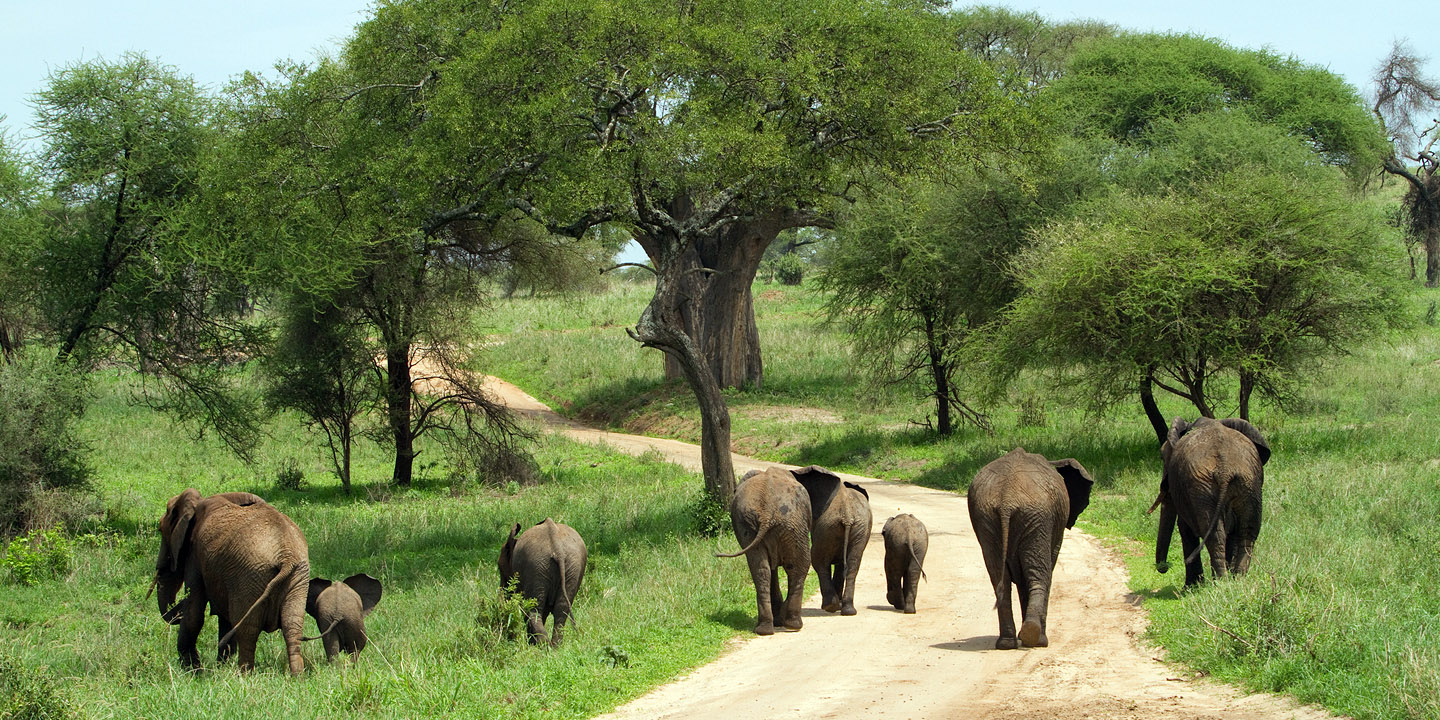
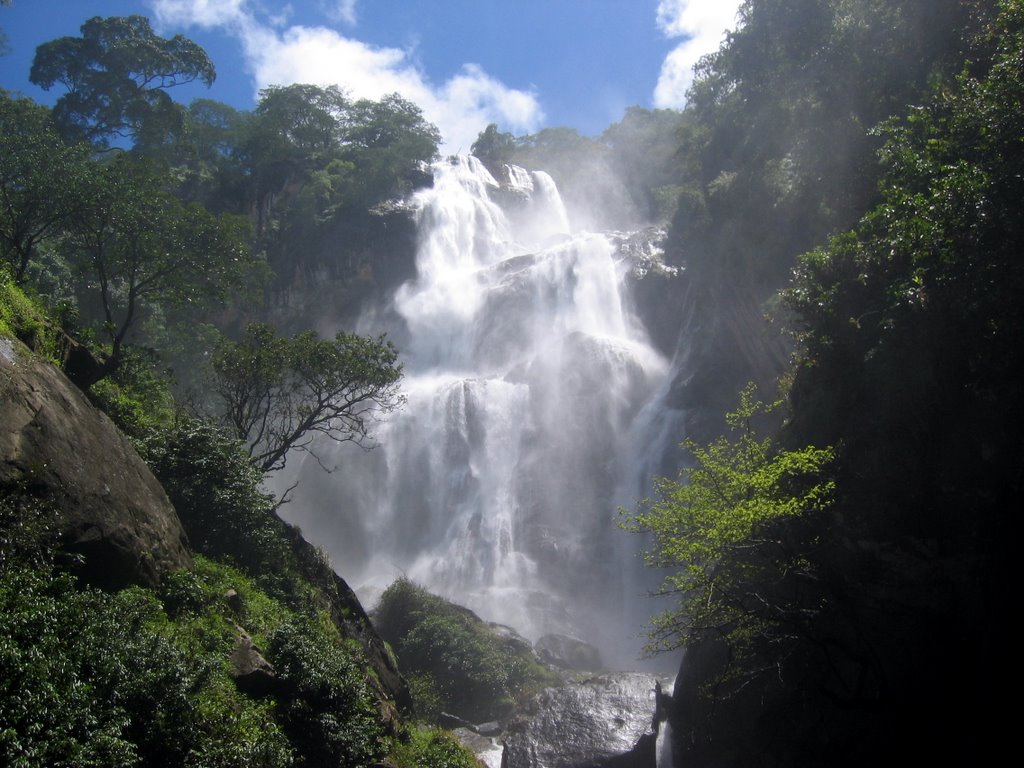
Udzungwa is one of Tanzania's largest park's but accessibility is severely limited-game drives are not possible, and therefore only trekking expeditions can be organized into the wilderness. The park hosts six species of primate, two of them are of endemic forms - the Red Colobus Monkey and the Sanje Crested Mangabey, discovered in 1979. The large resident populations of Elephant, Buffalo, Lion, Leopard, Wild Dog and Sable Antelope reside primarily on the side of the mountain range which is presently inaccessible. Other attractions of this park include the spectacular mountain scenery with rain forest, wooded grasslands, rock faces, rivers and waterfalls; the falls on the Sanje River which drops some 170 m through the forest and into the valley below; and the mountain plateau with views of over 100 km, much of it across a mosaic of mountain forest and grassland.
Located a few kilometers north of Kigoma , on the western part of Tanzania, is the smallest but one of the best known of Tanzania's National Park’s made famous for its primates and the research center of world renowned Dr. Jane Goodall. Gombe Stream consists of a narrow mountainous strip of country stretching along the eastern shore of Lake Tanganyika and running inland about 5 km to the peaks of the mountain range forming the rift escarpment. The thick gallery forests of the valley and lower slopes, and the open deciduous woodland on the upper slopes.are the few places where chimpanzees can still be found in their natural habitat. Since 1960, Dr. Jane Goodall and colleagues have studied the primates here. Other primates which may be seen in the park include: Baboon, Red Colobus Monkey, and Blue Monkey. and the birdlife include the African and the trumpeter hornbills, Ross's turaco, pied and giant kingfishers, and the crowned eagle. Access to the park is only by water vessel from either Kigoma or Ujiji.
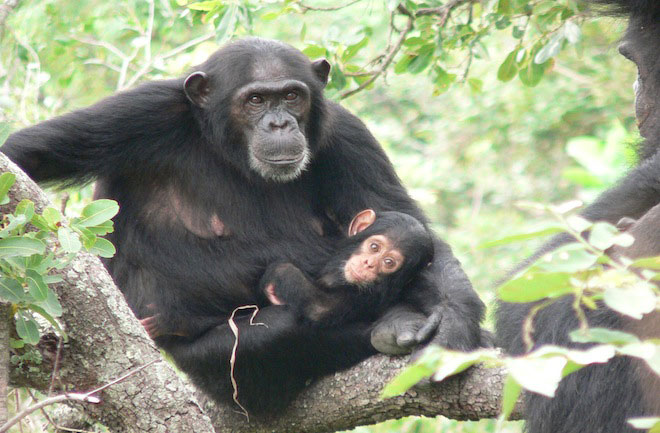
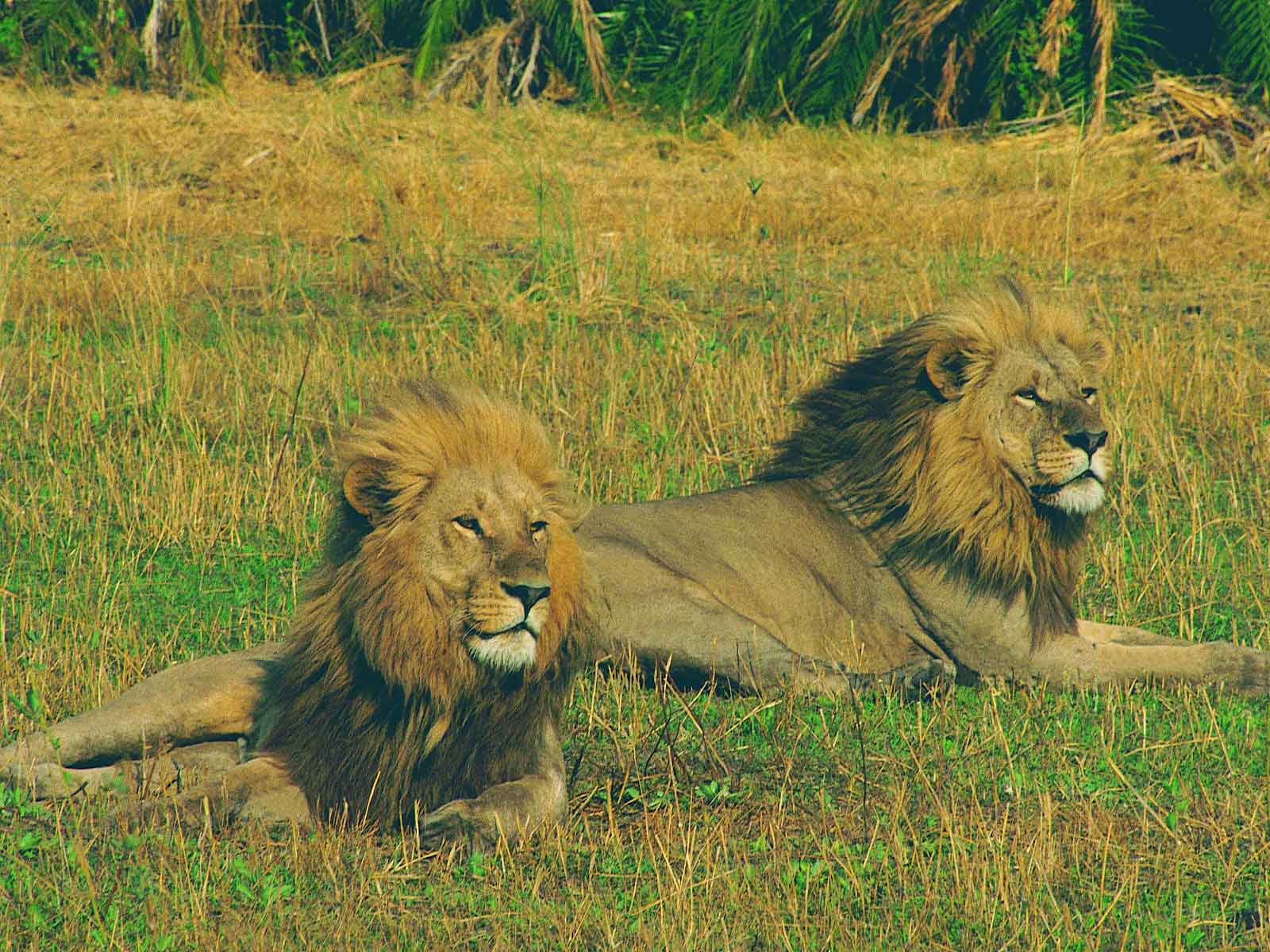
This remote and difficult park to reach (strictly recommended for those of an adventurous spirit) lies on a high flood plain surrounding Lake Kitavi, to the south of the Mahale Mountains. The main vegetation found here is the Miombo woodland. It has a wide variety of wildlife (crocodile, hippo, leopard, lion, roan and sable antelopes, southern reedbuck, topi, eland, elephant, and one of the largest herds of buffalo, with as many as 1,600 animals) and offers excellent game viewing with a real wilderness atmosphere. The diverse woodland, acacia bush, lakes and swamps have attracted over 400 species of birds, including large flocks of pelicans. Other attractions are Lakes Katavi and Chada, which are joined by the River Katuma. The best months to visit are July to October.
Locals refer to the Kitulo Plateau as Bustani ya Mungu - The Garden of God – while botanists have dubbed it the Serengeti of Flowers, host to ‘one of the great floral spectacles of the world’. And Kitulo is indeed a rare botanical marvel, home to a full 350 species of vascular plants, including 45 varieties of terrestrial orchid, which erupt into a riotous wildflower display of breathtaking scale and diversity during the main rainy season of late November to April.
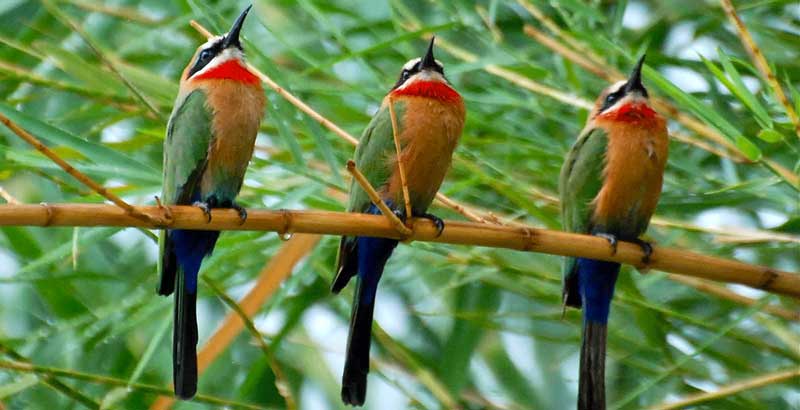
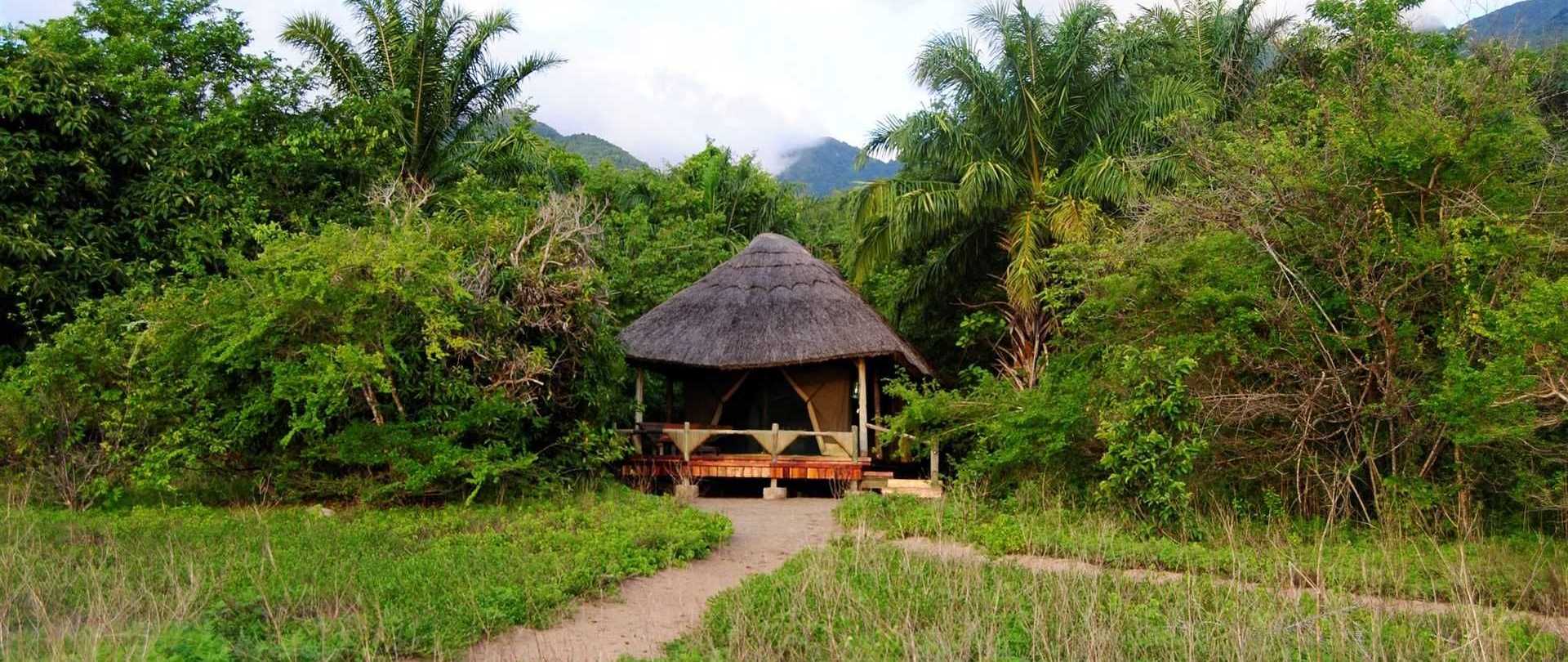
Located at Ujiji on the shores of Lake Tanganyika, where Stanley is reputed to have met Livingstone and given the famous greeting "Dr. Livingstone, I presume". The Mahale Mountains, like Gombe, are one of the last natural home to chimpanzees and are rich in birdlife. The park is a unique ecological zone with lowland forest, Miombo and open woodlands, moist and dry Savannah grasslands. Wildlife in the park includes primates, kudu, eland, roan and sable antelopes, giraffe, buffalo, elephant, lion and leopard. Access is by boat or plane, both of which are available for charter. There are no roads and all game viewing is done on foot. It is virtually the only Tanzanian park where you can walk around.
Located astride the main Dar to Mbeya highway, to the north of Selous Game Reserve and only 283 km from Dar-es-Salaam, the park is an important educational center for students of ecology and conservation, having been established to protect the environment and resident animals. The Mikumi flood plain is the main feature of the park along with the bordering mountain ranges. It has a landing strip and is home to, among others, the buffalo, zebra, giraffe, lion, wild dogs, python, monitor lizard, hartebeest, wildebeest, elephant hippo, impala, warthog, eland and antelope. Birds include the hammerkop, saddle-bill stork, and the malachite kingfisher. The vegetation is made up of woodland, grassland and swamp. There are two water holes, Mkata and Chamgore.
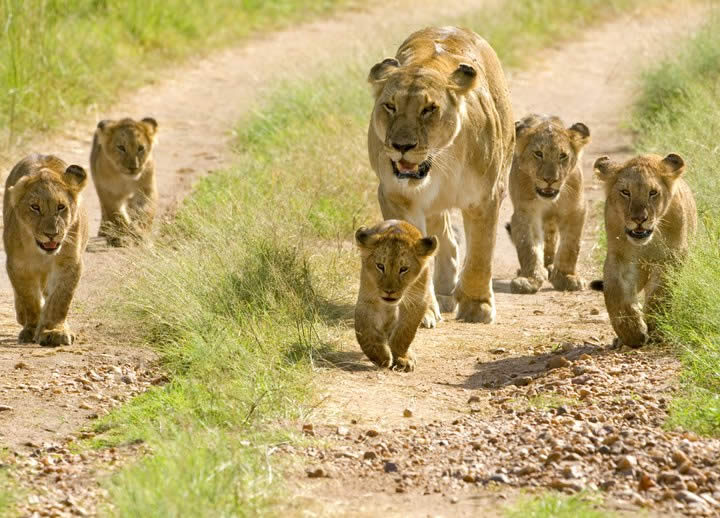

Olduvai, more accurately called Oldupai after the wild sisal in the area, is situated near the Ngorongoro Crater and is the site of some of the most important finds of early hominid fossils of all time (made famous by the work of the Leakey family) - The "Nutcracker Man" or Australophithecus boisei who lived 1.8 million years ago. There is a small informative museum located at the visitor center. The gorge is a treasure trove of archeological sites filled with fossils, settlement remains and stone artefacts. Lecture tours are offered.
At 13,000 sq. km, it is the second largest Tanzanian park and the world's largest elephant sanctuary. The park represents a transition zone where eastern and southern African species of fauna and flora overlap. It is the northernmost example of Miombo woodland, common in central Africa, and the most southerly protected area in which Grant's gazelle, lesser kudu and striped hyena are found. To be able to see both greater and lesser kudu and roan and sable antelope in the same park is one of the special attractions of Ruaha. In the dry season, the river is an excellent place for observing large numbers of game including lions, leopards, hunting dogs, giraffe, waterbuck, eland and warthogs. Thousands of birds flock to Ruaha on their annual migration from Europe to Asia, and 465 bird species have been sighted in the park. The park's residents include kingfishers, plovers, hornbills, green wood hoopoes, bee-eaters, sunbirds and egrets.


Located in the centre of the historic triangle of Bagamoyo, Pangani and Zanzibar, Saadani National Park covers 1100km square. It is the only wildlife sanctuary in Tanzania bordering the sea. The climate is coastal, hot and humid. It offers a unique combination of both marine and mainland flora and fauna in a culturally fascinating setting. About 30 species of larger mammals are present as well as numerous reptiles and birds. Besides many species of fish (over40), green turtle, Humpback whale and dolphins also occur in the ocean nearby.
The pristine reserve, a World Heritage Site since 1982, comprises an area of 55,000 sq. km, covering about six per cent of Tanzania's land surface. Larger than Switzerland, it is the world's largest game reserve and second only to the Serengeti in its concentration of wildlife. It is also the sanctuary of the biggest elephant herd in the world, about 32,000 elephants live in the reserve - 70 per cent of those in Tanzania. The reserve is difficult to describe without the use of superlatives.
Named after British hunter and writer Frederick Courteney Selous who was killed during the First World War in the Beho Beho region (of the reserve), the reserve is part of the 75,000 square kilometer Selous ecosystem, which includes Mikumi National Park, the Kilombero Game Controlled Areas . Nature experiences include a boat safari on the mighty Rufiji, walk on the wild side and ornithology (over 350 species).
